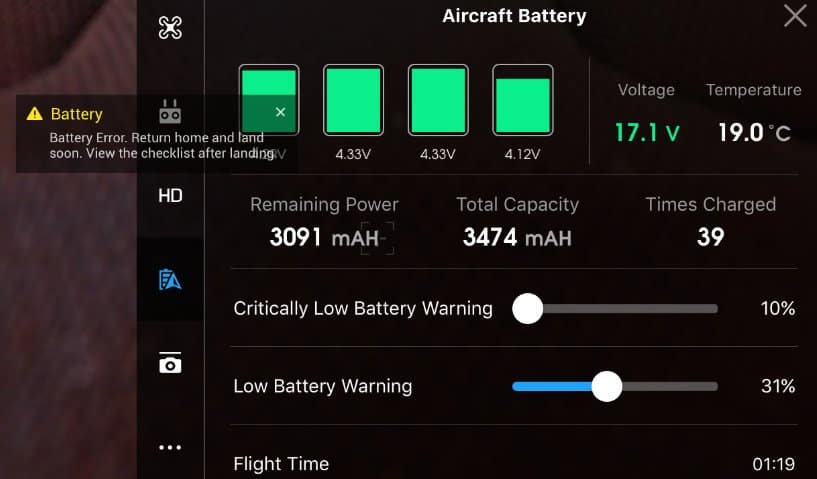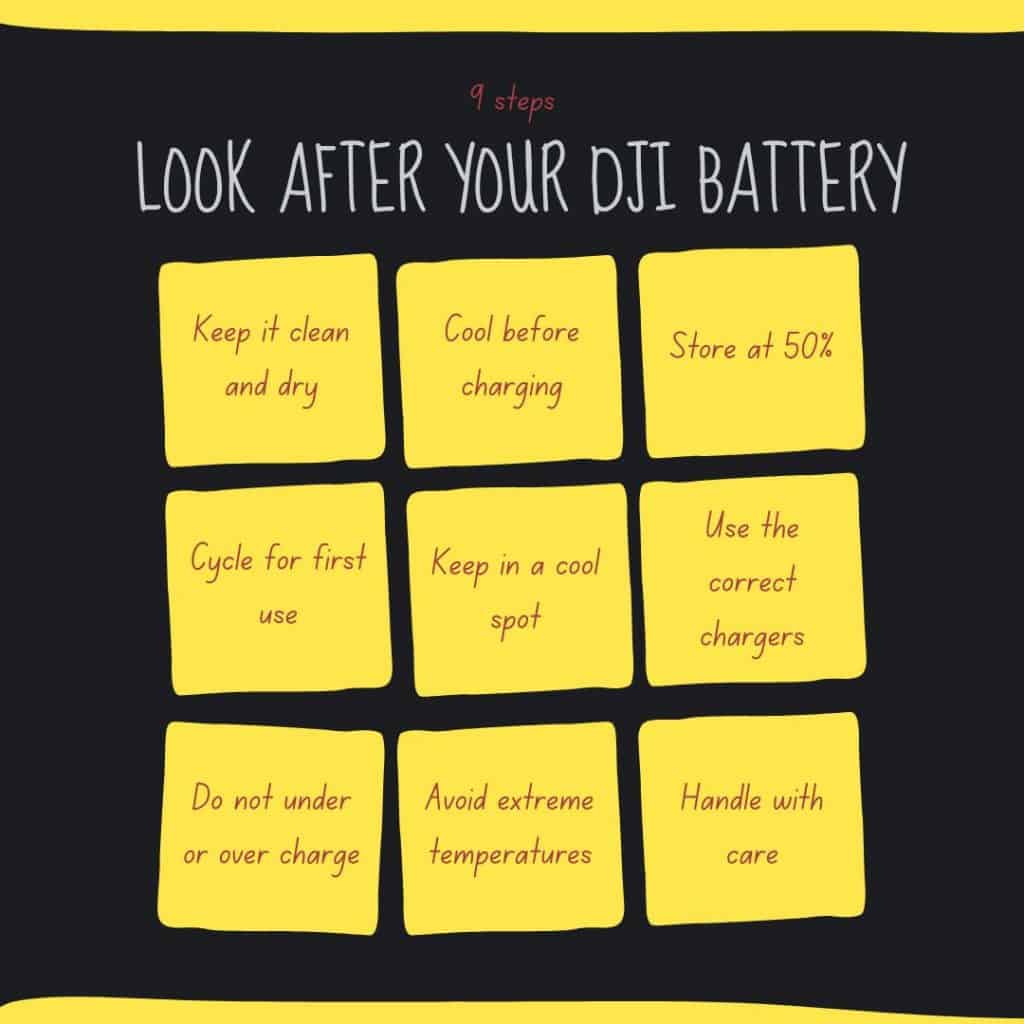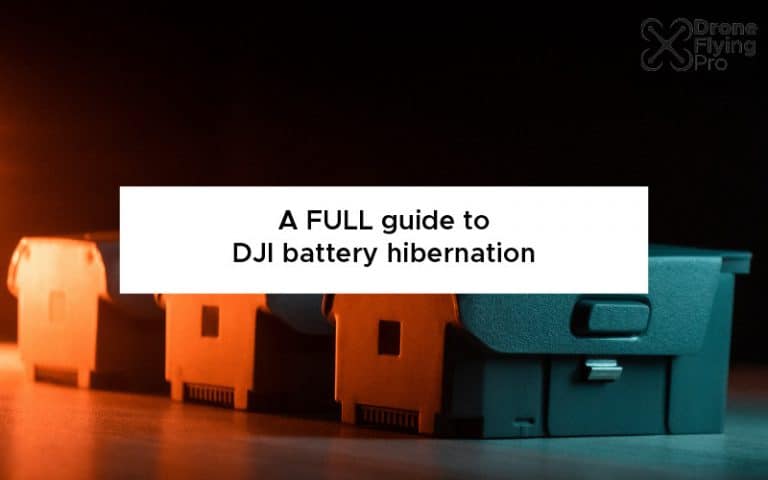DJI batteries are getting smarter and smarter with each new drone release. Unfortunately, sometimes their smarts can get the better of us and convinces us that our batteries are dead. A lot of the time they can be restored to their previous working condition because they have entered hibernation mode during storage. You
A DJI battery will enter hibernation mode if the battery cells drop below 3 V. You should charge your batteries once every three months during storage to ensure that they do not enter hibernation mode.
During hibernation mode, your DJI battery may seem like it cannot be revived. However, simply placing it back on a charger for 24 hours can wake it up from its deep sleep.
While it’s great to have a drone with you on vacation or when you travel for work, one thing that can be a pain is remembering to keep its battery charged.
So what do you do?
This article provides a full guide to DJI battery hibernation so that you can make sure your drone is always ready to fly.
What is Hibernation mode?
Hibernation mode is DJI’s way to protect the drone battery and the delicate lithium polymer chemistry that the drone relies on to fly.
If the battery level of a DJI drone battery becomes less than 10%, the battery will enter hibernation mode to prevent over-discharging.
Over-discharging can cause instability in the DJI battery’s chemistry causing electrolyte decomposition and swelling.
Drone battery cells should be kept above 3 V to avoid entering hibernation mode.
You can see the individual cell voltages by viewing them in the DJI fly App

In hibernation mode, the intelligent smart battery will not wake up when the battery power button is pressed, and the battery level indicators will not illuminate.
To wake up the battery from hibernation mode, you can charge it using the cable provided.
What causes Hibernation mode
Proper battery storage for DJI batteries is very important. The lithium polymer or Lithium-ion composite is very sensitive to storage and extreme temperature fluctuations.
DJI has programmed a hibernation mode into the smart batteries to protect the battery. The battery will enter hibernation mode if it senses it is close to being fully depleted.
This happens when it has been stored for a long time or you have run the battery to below 3V per cell.
Hibernation mode prevents the battery from overcharging.
The drone battery will not light up when you push the button, and it may seem like it has died altogether.
How to check your DJI battery voltage
It is important to check the voltage of your DJI battery before putting it into long term storage (3 months) where it may enter hibernation mode.
You can do this by connecting the battery to a voltmeter and checking the reading or by checking the voltage in the DJI Fly or Go 4 App.
In my YouTube video, below, I talk you through how to check your DJI battery health
The ideal lowest voltage for a DJI battery is 3.7V per cell. If the voltage is below this, you should charge immediately and allow the automatic discharge to reduce the cell voltage to a more acceptable level before storage.
How to wake your DJI battery from hibernation
Your DJI battery may enter hibernation if it is left unused for more than 30 days. When in hibernation, the battery will not charge and will not power on your drone. To wake your battery from hibernation, simply connect it to a charger and allow it to charge for at least 20 minutes. Once the battery is charged, it will be back to normal operation.
If your battery does not seem to be charging or powering on your drone after being in hibernation, you may need to replace the battery.
How to hibernate and store your DJI batteries
Never leave your drone batteries fully charged if storing for long periods of time – like over a month. It is best to leave your batteries at 3.9 volts per cell if you are not planning on using them within a week.
100 % charges LiPo batteries are much more unstable than when at 50 % – increasing the likelihood of electrolyte degradation.
Some of the smart batteries will auto-discharge themselves so that they reach about 3.9 V per cell. Here are some basic rules of thumb if you want to store your drone batteries for various lengths of time:
- Short-term Storage – Batteries should be discharged to between 60 and 80% if you’re not using them for between one and ten days.
- Long-term Storage – If storing for more than ten days, store the battery between 40 and 60%. Batteries should not be left for over three months without being charged as the battery life will be reduced.
How to keep your Drone battery healthy
Drone batteries are expensive, and it’s important to take care of them so they last as long as possible. Here are some tips for keeping your drone battery healthy:

1. Avoid extreme temperatures. Batteries work best within a moderate temperature range, so avoid exposing them to extremes of heat or cold.
2. Store in a cool, dry place. When not in use, store your drone battery in a cool, dry place out of direct sunlight.
3. Charge regularly. Batteries will self-discharge over time, so it’s important to charge them up frequently to keep them healthy.
4. Don’t overcharge. Overcharging a battery can shorten its lifespan, so be sure to follow the manufacturer’s charging instructions carefully.
5. Balance the cells. If you’re using a lithium-ion battery, it’s important to balance the cells regularly to prevent performance degradation. You can do this by discharging and recharging your drone battery completely until all cells are reading within 0.1 V of each other.
6. Use a good charger. Using a low-quality charger can damage your battery, so be sure to use a reputable brand that is designed for your specific battery type.
By following these tips, you can keep your drone battery healthy and prolong its life.
Wrapping up
We hope this guide has helped you better understand DJI battery hibernation and how to properly care for your batteries.
Your batteries will enter hibernation mode to keep themselves safe which is an important part of prolonging their lifespan and ensuring they perform at their best.
With proper care, your batteries will last longer and give you the power you need to keep flying.




